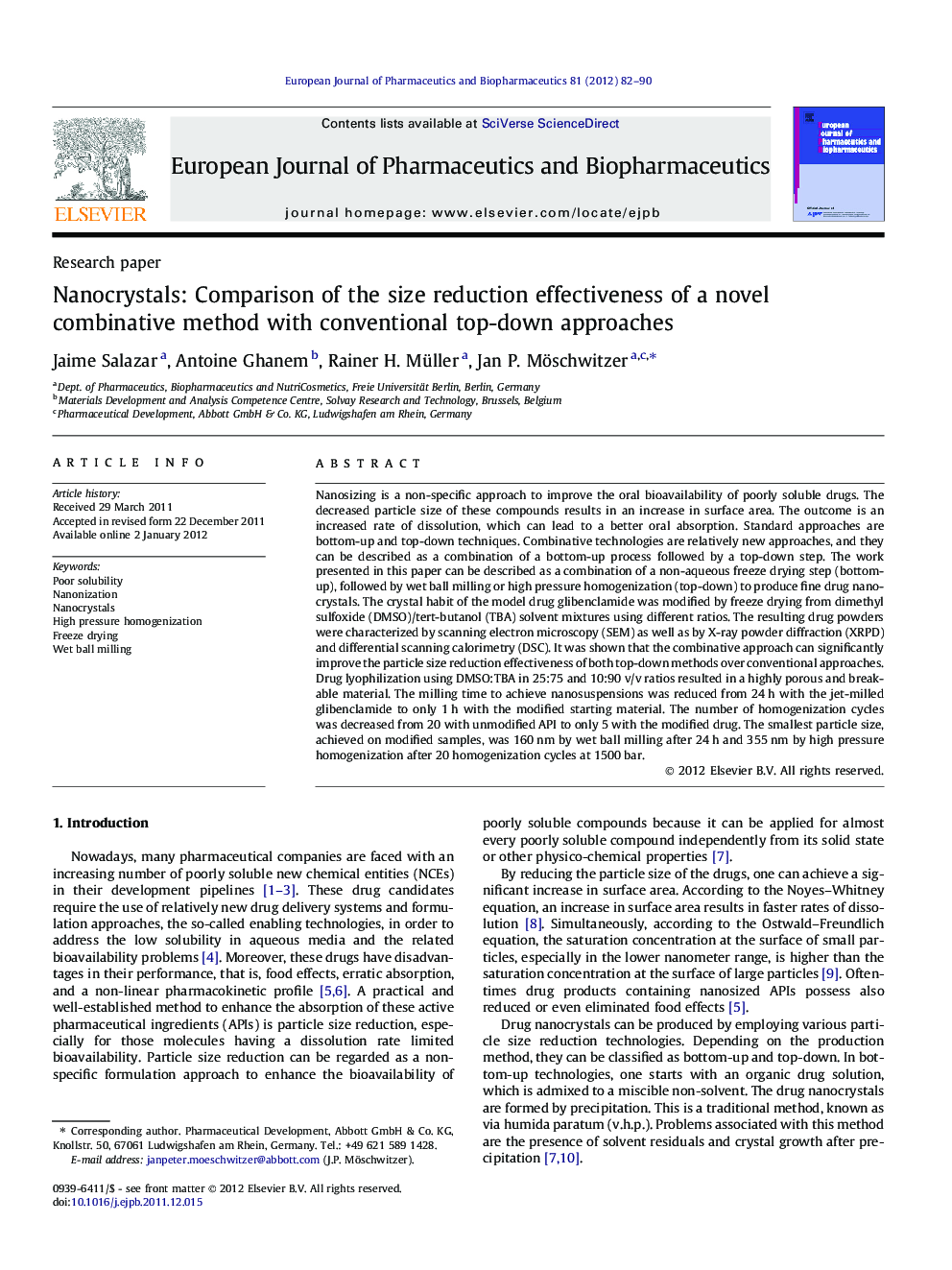| کد مقاله | کد نشریه | سال انتشار | مقاله انگلیسی | نسخه تمام متن |
|---|---|---|---|---|
| 2083766 | 1545361 | 2012 | 9 صفحه PDF | دانلود رایگان |

Nanosizing is a non-specific approach to improve the oral bioavailability of poorly soluble drugs. The decreased particle size of these compounds results in an increase in surface area. The outcome is an increased rate of dissolution, which can lead to a better oral absorption. Standard approaches are bottom-up and top-down techniques. Combinative technologies are relatively new approaches, and they can be described as a combination of a bottom-up process followed by a top-down step. The work presented in this paper can be described as a combination of a non-aqueous freeze drying step (bottom-up), followed by wet ball milling or high pressure homogenization (top-down) to produce fine drug nanocrystals. The crystal habit of the model drug glibenclamide was modified by freeze drying from dimethyl sulfoxide (DMSO)/tert-butanol (TBA) solvent mixtures using different ratios. The resulting drug powders were characterized by scanning electron microscopy (SEM) as well as by X-ray powder diffraction (XRPD) and differential scanning calorimetry (DSC). It was shown that the combinative approach can significantly improve the particle size reduction effectiveness of both top-down methods over conventional approaches. Drug lyophilization using DMSO:TBA in 25:75 and 10:90 v/v ratios resulted in a highly porous and breakable material. The milling time to achieve nanosuspensions was reduced from 24 h with the jet-milled glibenclamide to only 1 h with the modified starting material. The number of homogenization cycles was decreased from 20 with unmodified API to only 5 with the modified drug. The smallest particle size, achieved on modified samples, was 160 nm by wet ball milling after 24 h and 355 nm by high pressure homogenization after 20 homogenization cycles at 1500 bar.
API starting material is pre-treated by freeze drying and further processed into nanosuspensions by high pressure homogenization or wet ball milling. The resulting nanosuspensions can be transferred into solid dosage forms.Figure optionsDownload high-quality image (119 K)Download as PowerPoint slide
Journal: European Journal of Pharmaceutics and Biopharmaceutics - Volume 81, Issue 1, May 2012, Pages 82–90